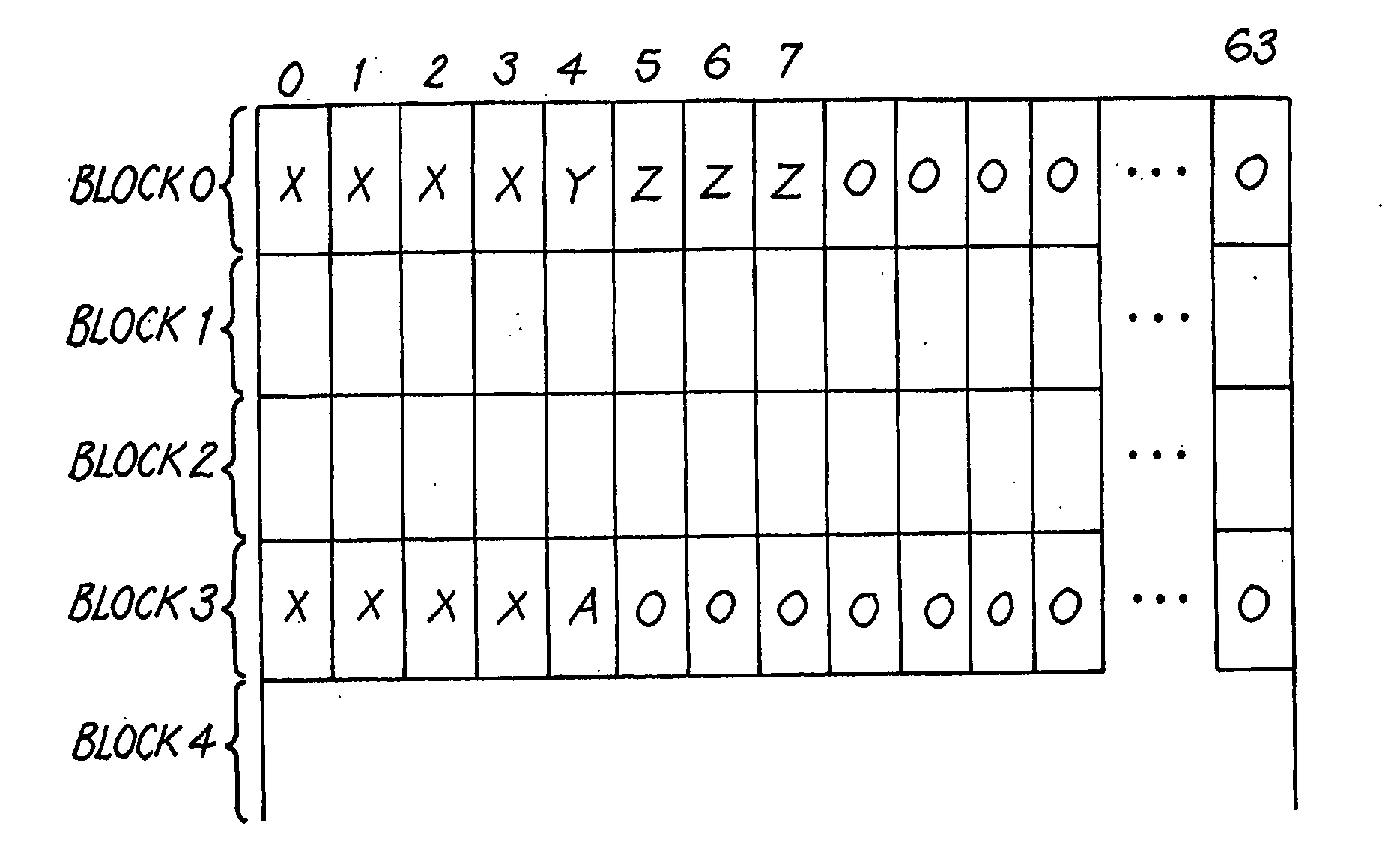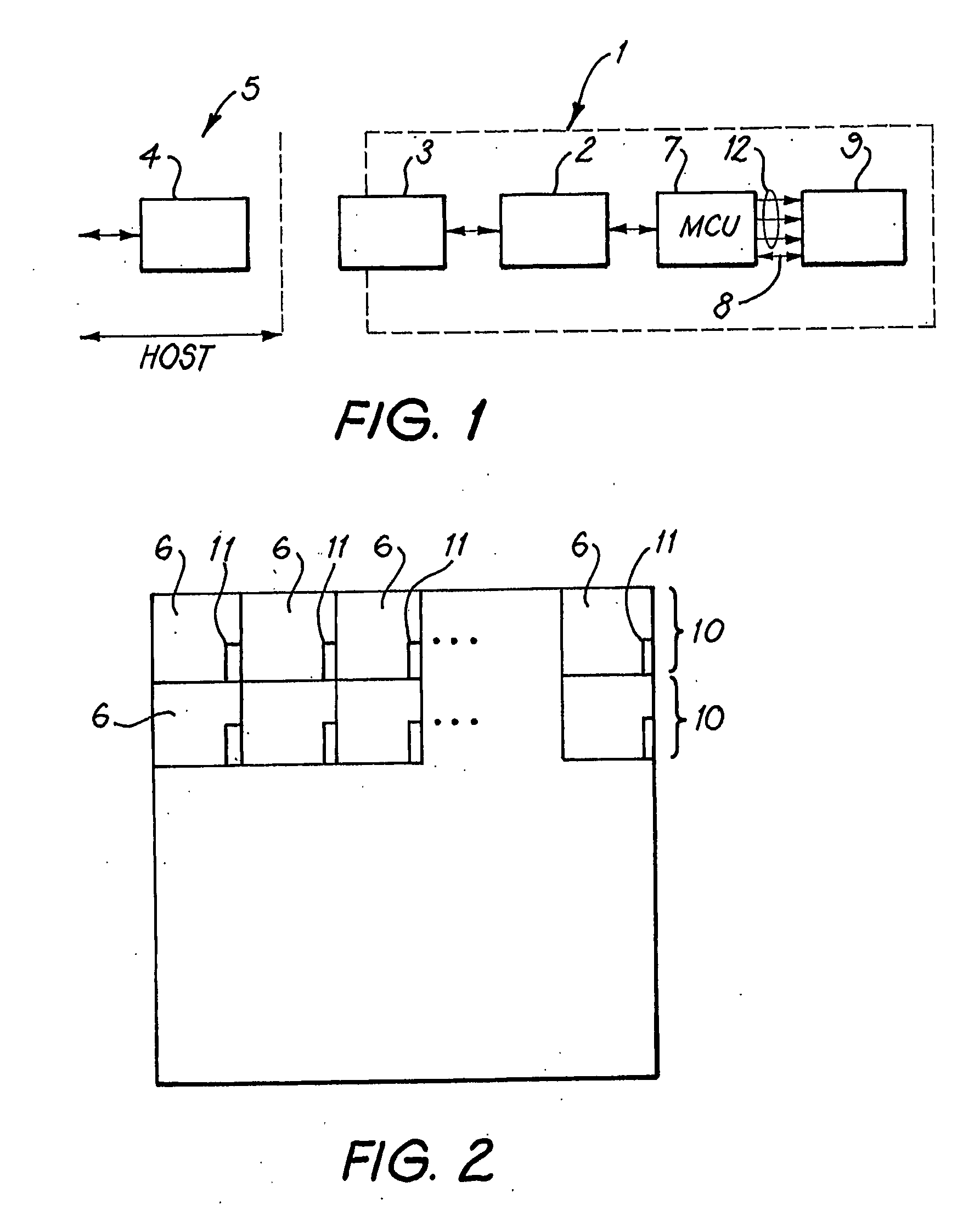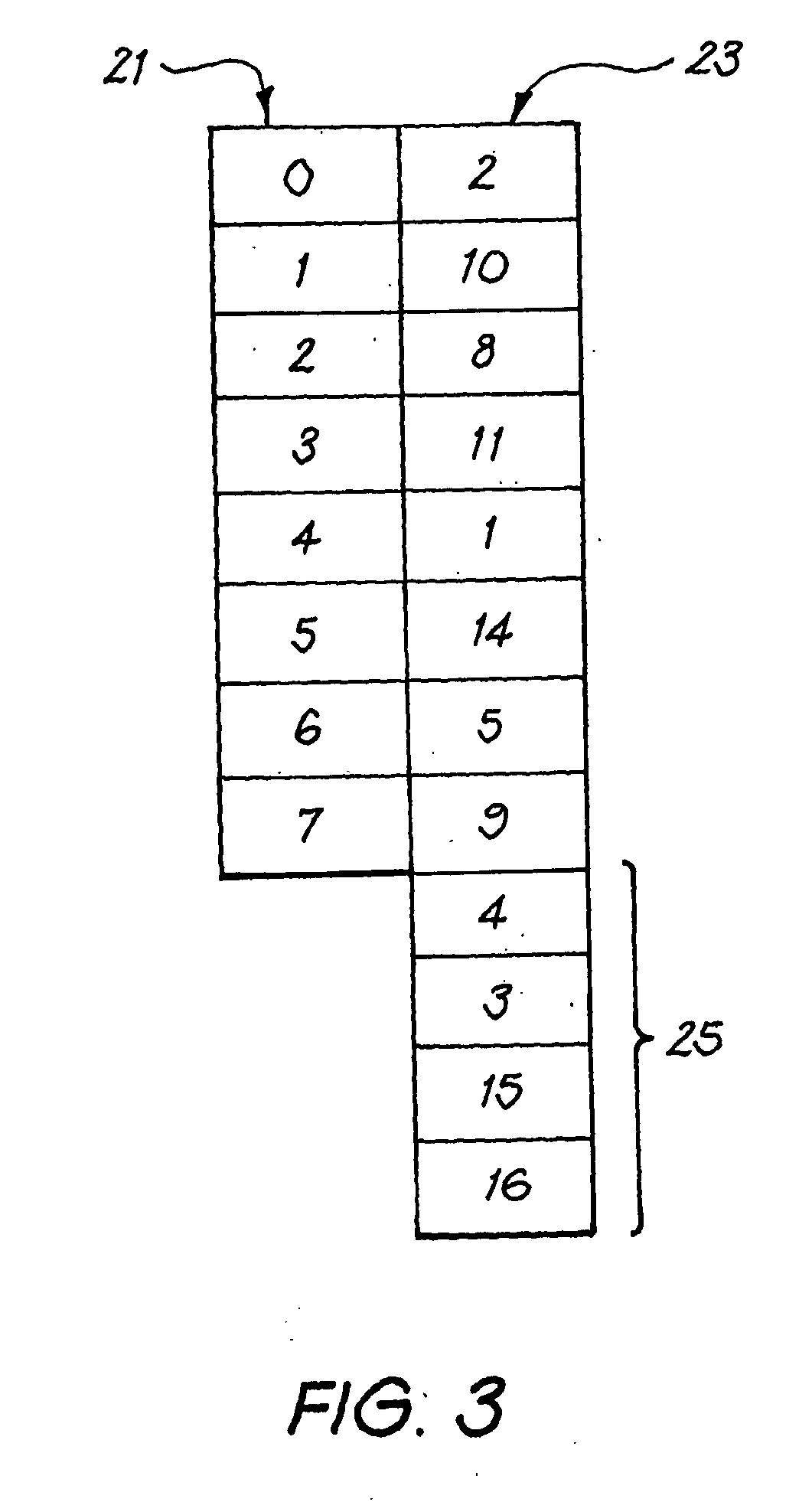Portable Data Storage Device Using a Memory Address Mapping Table
- Summary
- Abstract
- Description
- Claims
- Application Information
AI Technical Summary
Benefits of technology
Problems solved by technology
Method used
Image
Examples
first embodiment
[0055]the invention will now be described. It may have the same physical structure as shown in FIG. 1, and for that reason the corresponding elements of the embodiment will be given the same reference numerals as used in FIG. 1. All the elements shown may be contained in a single housing, e.g. one on which the USB connector 3 is mounted. The USB connector 3 (e.g. USB plug) may be connected directly to a host computer (e.g. a personal computer (PC)) by plugging in to a USB socket 4 of the host computer 5. Alternatively, a cable may be attached between them. It should be noted that this device may have many features which are not shown explicitly in FIG. 1, but which are known in other publicly-available portable data storage devices, such as password protection, access controlled by fingerprint verification, etc. The implementation of such features will be clear to one skilled in the art.
[0056]FIG. 3 shows the memory address mapping table used by the first embodiment. This table is s...
second embodiment
[0079]This describes how the second embodiment operates the mapping between logical address regions and respective groups of blocks. A logically separate issue is how the embodiment maps logical addresses within any given logical address region to respective pages in the corresponding group of blocks.
[0080]One possibility is for the correspondence to be what we will call “horizontal”. This means that the consecutive pages of the blocks to correspond to consecutive logical addresses. The final page of each block (except the last block of the group) corresponds to the logical address consecutively before the logical address corresponding to the first page of the next block of the group. Thus, for example, an amount of data which is slightly larger than the number of pages of a single block, will be written to the memory such that the beginning of the data is written to a page specified by a logical address, then consecutive pages of the block are written to until the block is exhauste...
third embodiment
[0088]However, in the invention the physical memory is instead initially rewritten to be as shown in FIG. 7(c). That is, the data A is written to page 4 of block 3, and the data X is copied to pages 0 to 3, but the data Z is not yet copied to pages 5 to 7 of block 3. The system remains in this configuration for a time period given by a timer. If by the end of this period no further WRITE signal has been received in respect of the logical address corresponding to page 5 of block 3, then the write operation is completed to give the data storage shown in FIG. 7(b). However, if during this period a new WRITE instruction is received which indicates that data B is to be stored at the logical address now corresponding to page 5 of block 3, then this data B is written to page 5 of block 3, giving the data storage shown in FIG. 7(d). The timer is then started again to define a new time period.
[0089]If by the end of this period no further WRITE signal has been received in respect of the logic...
PUM
 Login to View More
Login to View More Abstract
Description
Claims
Application Information
 Login to View More
Login to View More - R&D
- Intellectual Property
- Life Sciences
- Materials
- Tech Scout
- Unparalleled Data Quality
- Higher Quality Content
- 60% Fewer Hallucinations
Browse by: Latest US Patents, China's latest patents, Technical Efficacy Thesaurus, Application Domain, Technology Topic, Popular Technical Reports.
© 2025 PatSnap. All rights reserved.Legal|Privacy policy|Modern Slavery Act Transparency Statement|Sitemap|About US| Contact US: help@patsnap.com



